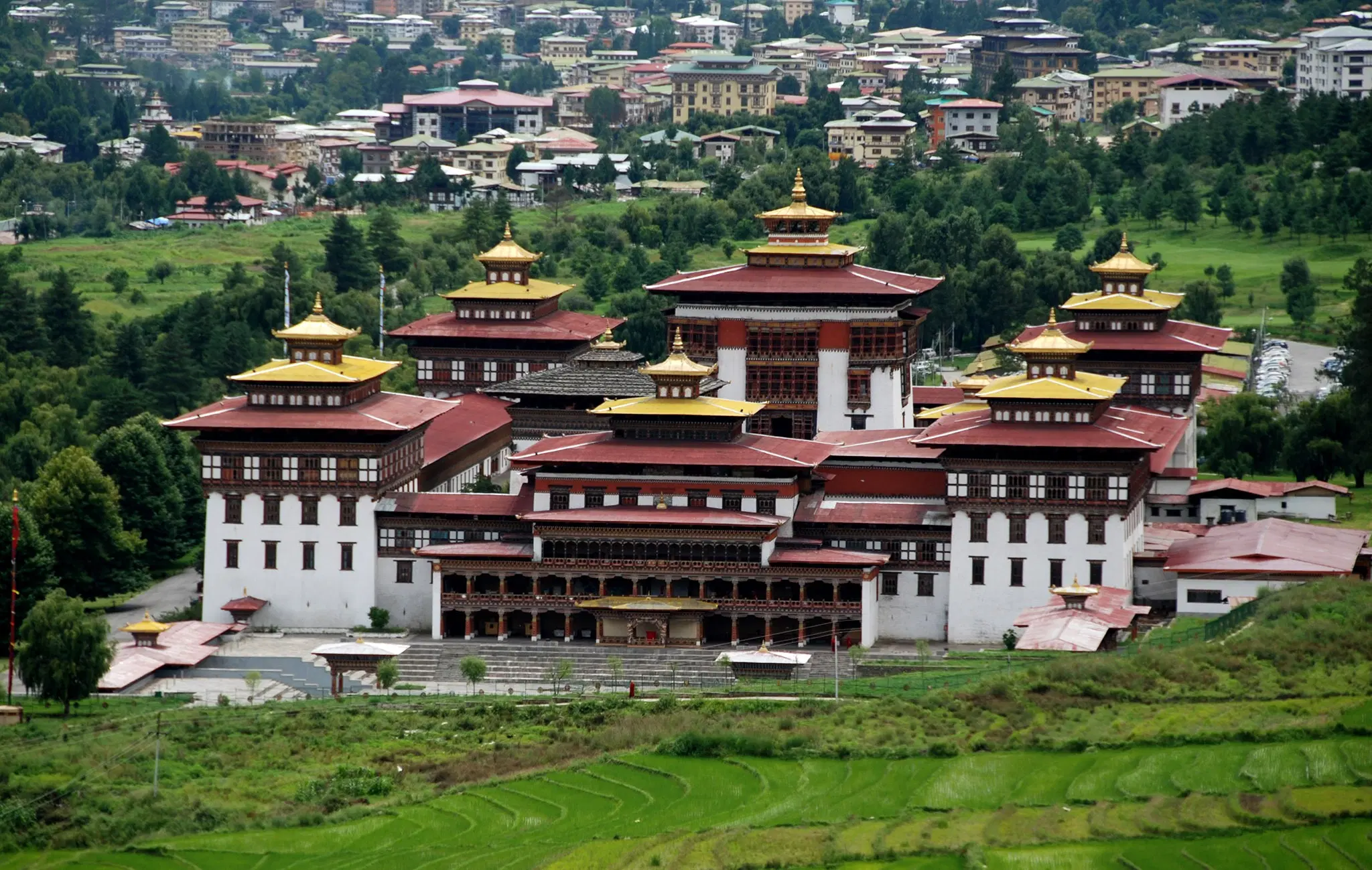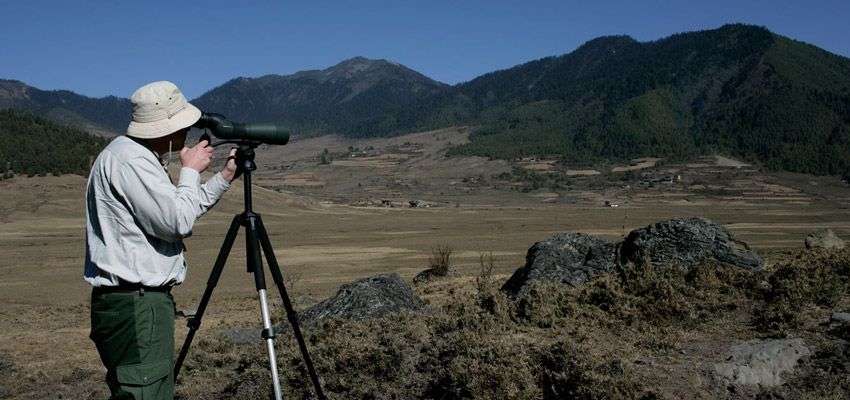
In the remote corners of the Himalayan kingdom of Bhutan, where ancient forests meet mist-shrouded peaks, a legend persists that has captivated locals and visitors for centuries. This is the realm of the Migoi, Bhutan’s enigmatic Yeti, a creature that inhabits not just the physical landscape but the very soul of Bhutanese folklore and culture. As we embark on this exploration of the Migoi, we invite you to suspend disbelief and immerse yourself in a world where reality and myth intertwine, where ancient traditions still hold sway, and where the possibility of encountering something truly extraordinary lingers in every shadow.
The term “Migoi” translates roughly to “wild man” in Dzongkha, Bhutan’s official language. Unlike the more widely known Yeti of Nepal and Tibet, the Bhutanese Migoi has a distinct identity deeply rooted in the country’s cultural and spiritual traditions. The legend of the Migoi predates written history in Bhutan, passed down through generations in oral traditions. Some scholars believe the myth may have originated from encounters with now-extinct primates or even early hominids that once inhabited the region. With the arrival of Buddhism in Bhutan in the 7th century, the Migoi legend became intertwined with spiritual beliefs. In some interpretations, the Migoi is seen as a manifestation of mountain deities or nature spirits, bridging the gap between the physical and spiritual realms.
As with many folkloric creatures, the description and attributes of the Migoi can vary from one region of Bhutan to another. In some areas, it’s described as a gentle giant, while in others, it’s portrayed as a more fearsome creature. However, certain characteristics remain consistent across most accounts. The Bhutanese Yeti is often depicted as a large, ape-like creature covered in reddish-brown or gray hair. Its height is said to range from 6 to 10 feet, with some accounts claiming even taller individuals. Perhaps the most intriguing attribute of the Migoi is its supposed ability to become invisible at will. This unique feature in Bhutanese Yeti lore explains why sightings are so rare and adds an extra layer of mystique to the creature.
Another distinctive characteristic of the Migoi is its feet, which are said to face backward. This peculiarity is believed to confuse trackers, making the creature even more difficult to find. Like many legendary beings, the Migoi is reputed to possess incredible strength, capable of uprooting trees and moving boulders with ease. In many stories, the Migoi is portrayed as highly intelligent, capable of complex behavior and even using simple tools. Some legends even attribute shapeshifting abilities to the Migoi, allowing it to take on different forms to evade detection or interact with humans.

Megoi or Yeti in Bhutanese Culture
The Migoi occupies a central place in Bhutanese folklore, featuring in countless stories that reflect the values, fears, and aspirations of Bhutanese society. One popular tale speaks of a Migoi that rescues a lost child in the forest, returning them safely to their village. This story emphasizes the belief that the Migoi, despite its fearsome appearance, can be a benevolent creature. Another legend tells of a hunter who killed a Migoi, only to have his entire village plagued by misfortune afterward. This tale serves as a cautionary story about respecting nature and its creatures. Some folklore speaks of a hidden kingdom of Migoi deep in the mountains, where they live in harmony with nature, possessing advanced knowledge and spiritual wisdom. A well-known story recounts an encounter between a high lama and a Migoi, where the creature seeks Buddhist teachings, highlighting the spiritual dimension attributed to the Migoi in Bhutanese culture.
The influence of the Migoi extends far beyond mere campfire tales, permeating various aspects of Bhutanese culture. In a testament to the reverence Bhutanese people hold for the Migoi, the creature is officially listed as an endangered species in Bhutan. The Sakteng Wildlife Sanctuary in eastern Bhutan was partly created to protect the Migoi’s supposed habitat. In Bhutanese Buddhism, the Migoi is sometimes seen as a manifestation of mountain deities or nature spirits. Some believe that sighting a Migoi can be a spiritually significant event, possibly even a blessing.
The legend of the Migoi is celebrated in various cultural festivals across Bhutan. In some regions, masked dancers portray the Yeti in traditional performances, keeping the legend alive through art and ritual. The Migoi frequently appears in Bhutanese art, from traditional thangka paintings to contemporary works. Its image can be found in monasteries, public buildings, and even on souvenirs. Some Bhutanese families name their children after the Migoi or use names that reference the creature, believing it will bring strength and protection to the child.

While concrete evidence of the Migoi’s existence remains elusive, numerous sightings and encounters have been reported over the years, fueling the legend and inspiring expeditions. Many Bhutanese, especially those living in remote mountain areas, claim to have seen the Migoi or found evidence of its presence, such as large, unusual footprints in the snow or on muddy forest floors. In 2001, a supposed Migoi hair sample was found in Bhutan’s Sakten region. While DNA tests were inconclusive, the incident sparked renewed interest in the creature.
Several scientific expeditions have been conducted in Bhutan in search of the Migoi. While these haven’t provided concrete proof, they’ve contributed valuable data about Bhutan’s biodiversity. Bhutan’s royalty has shown interest in the Migoi legend. In the 1980s, King Jigme Singye Wangchuck even invited a Japanese expedition to search for evidence of the creature. Numerous cryptozoologists have visited Bhutan to investigate Migoi sightings, adding to the body of anecdotal evidence and theories about the creature’s possible existence.
As Bhutan modernizes, the legend of the Migoi continues to evolve, finding new relevance in contemporary society. The Migoi has become a powerful symbol for conservation efforts in Bhutan, embodying the need to protect the country’s pristine wilderness and unique biodiversity. The allure of potentially spotting a Migoi has become a draw for adventure tourists, contributing to Bhutan’s growing ecotourism industry. The Migoi legend serves as a link to Bhutan’s past, helping to preserve traditional beliefs and stories in the face of rapid modernization. The legend has sparked scientific interest in Bhutan’s remote areas, leading to the discovery of new species and furthering our understanding of Himalayan ecosystems. Schools in Bhutan often use the Migoi legend as a way to teach children about conservation, respect for nature, and critical thinking.

For those intrigued by the legend of the Migoi and eager to explore its supposed habitat, Bhutan offers several key destinations. The Sakteng Wildlife Sanctuary in eastern Bhutan is considered prime Migoi territory. Its diverse ecosystems, from alpine meadows to temperate broadleaf forests, provide the perfect backdrop for Migoi expeditions. The Bumthang Valley, known as Bhutan’s spiritual heartland, is rich in folklore and supposed Migoi sightings. The ancient temples and monasteries here often feature Migoi in their art and legends. Jigme Dorji National Park, Bhutan’s second-largest protected area, is another reputed Migoi habitat, offering stunning landscapes and rich biodiversity. The park’s remote areas are perfect for those seeking a true wilderness experience.
While the existence of the Migoi remains unproven, scientists have proposed several theories to explain the persistent legend. Some suggest that Migoi sightings could be misidentifications of known animals, such as the Himalayan black bear or the rare Tibetan blue bear. The power of suggestion and the human tendency to seek patterns could explain some Migoi encounters, especially in the atmospheric mountain environments of Bhutan. Some anthropologists propose that the Migoi legend could be a cultural memory of extinct hominids or early human ancestors that once inhabited the region. A few researchers maintain the possibility that an unknown primate species could exist in the remote regions of the Himalayas, though most scientists consider this unlikely. The Migoi legend may have evolved over time, incorporating elements from various sources to create a unique cultural phenomenon.
As interest in the Migoi grows, it’s important to consider the ethical implications of Migoi tourism and research. Visitors should approach the Migoi legend with respect, understanding its importance in Bhutanese culture. Any Migoi-related tourism or research should prioritize environmental conservation and minimal impact on local ecosystems. Efforts to document or investigate Migoi sightings should be conducted with the full cooperation and consent of local communities. While maintaining a scientific approach, it’s important to respect the cultural significance of the Migoi legend. Migoi-related tourism should benefit local communities and contribute to conservation efforts.
The legend of the Migoi is more than just a fascinating tale – it’s a window into the heart of Bhutanese culture and spirituality. Whether the Migoi truly exists or not, its impact on Bhutan’s cultural landscape is undeniable. The creature serves as a powerful reminder of the magic and mystery that still exists in our world, and of the importance of preserving both natural habitats and cultural traditions. In a world that often seems fully explored and demystified, the Migoi represents the enduring human desire for wonder and the unknown. It challenges us to keep an open mind, to respect traditional knowledge, and to approach the natural world with reverence and curiosity.
Are you ready to explore the land of the Migoi and immerse yourself in the rich tapestry of Bhutanese folklore and culture? Best of Bhutan Tours offers expertly crafted itineraries that take you deep into the heart of Migoi country. Our knowledgeable guides, all local experts steeped in Bhutanese traditions, will bring the legend of the Migoi to life as you trek through mist-laden forests, visit remote monasteries, and interact with local communities.

With Best of Bhutan Tours, you’re not just a visitor – you’re an explorer, delving into one of the world’s last great mysteries. Our commitment to sustainable tourism ensures that your adventure not only enriches your life but also contributes to the preservation of Bhutan’s unique cultural and natural heritage. Don’t just read about the Migoi – come experience the magic for yourself. Book your tour with Best of Bhutan today and step into a world where legends come alive and every forest trail holds the promise of an extraordinary encounter. Your Bhutanese adventure awaits!
Remember, in Bhutan, the journey is as important as the destination. Whether or not you catch a glimpse of the elusive Migoi, you’re guaranteed an unforgettable adventure in one of the world’s most unique and captivating countries. Let Best of Bhutan Tours be your guide to the kingdom where happiness is measured, tradition is treasured, and legends still roam the misty mountains.


